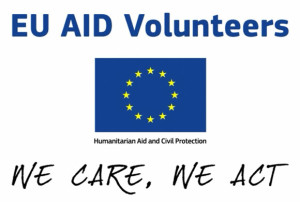I’ve been researching updates for my page A Brief Review of the Early History of Nonprofits and the Internet (before 1996). I started the page a few years ago because I worried that the pivotal role that nonprofits played in the early days of electronic networks is overlooked, and because so many people claiming to be starting something new regarding the Internet for nonprofits are really recycling and renaming ideas from decades ago. As I revisited resources I already knew about and found new ones, it reminded me yet again of how much great stuff was written even 25 years ago or more about the potential of the Internet for a force for good, and how much of the advice from then is still valid.

An example of what a FirstClass Client online community looked like (I wish I could show you what CItyNet, or any of the Virtual Valley communities, or BMUG, looked like, but there doesn’t seem to be any screen captures of them online).
One of my favorite early resources is from 1993; written by Steve Cisler, then of Apple Computers, “Community Computer Networks: Building Electronic Greenbelts” notes that, “On a local level, thousands of electronic bulletin boards have been started by dedicated individual hobbyists, small business people, non-profits, corporations, federal agencies, other governments and educational institutions.” And Cisler noted the role of volunteers in creating and sustaining these online communities – and that means online volunteers. Back then, Free-nets and community networks were all the rage among the small number of advocates for Internet use by everyday citizens, like Virtual Valley Community Network, a series of community bulletin boards via FirstClass and serving cities in Silicon Valley, California by San Jose-based Metro Newspapers, the most popular being Cupertino’s CityNet. I was involved in CityNet, just as a user, as well as Virtual Valley and Mac-focused online bulletin boards back in the early 1990s, when I was living in San José – I was much more excited by them than the World Wide Web, which, to me, was just a series of online brochures.
In May 1994, Apple Inc. and the nonprofit Morino Institute held the Ties That Bind Conference on Building Community Networks, at Apple HQ in Cupertino, California. It was about the potential of communities online that “make a difference” and “drive positive, sustaining social change.” It defined such communities as everything from neighborhoods to dispersed people with something in common, like a health concern, or caregiving. At that 1994 Silicon Valley conference, the Morino Institute presented a document called Assessment and Evolution of Community Networking. The document opens with a letter published in the newsletter of the Cleveland chapter of the Alzheimer’s Association:
“Every time I do get on Free-Net, I need some kind of help, and when I leave I have truly received the help I need. … I want you to know that without Free-Net I would be lost. … I don’t worry, I am not afraid, I have Free-Net and my Computer Family of loving and caring friends.”
He’s talking about online volunteers – people caring for loved ones with Alzheimer’s and donating their time and knowledge to others online. Is this the earliest heartfelt statement on record by someone that has benefitted on an emotional and psychological level from the efforts of online volunteers? It’s the earliest I’ve found – though virtual volunteering is a practice as old as the Internet, which means it began in the 1970s. Regardless, the statement well represents the potential of virtual volunteering – a potential thousands of organizations and their clients have realized.
I also found this San Jose Mercury News article in 1995 noting the lack of public interest at the time regarding the Cupertino CityNet system allowing users to message their elected officials. An excerpt:
Let the record show that history was made, but few took note.
Cupertino this week became the first city in the nation to allow people to communicate with the city council from home via computer during meetings. The results: Five notes saying, “This is a great idea,” and another, in response to a comment jokingly made by Councilman John Bautista, informing the council that people who commute by bicycle do obey traffic signals.
Although just a handful of residents sent messages, city officials say they have great hopes for the future of interactive computer access to the city council.
Doesn’t sound promising, in the heart of Silicon Valley, for this Internet thing… and yet, less than three years after this article was published, I was directing the Virtual Volunteering Project and abandoning my idea of listing every nonprofit, community or government endeavor involving online volunteers because there were already way too many to count.
My search this time to update my page uncovered a resource I hadn’t seen before: Janice Morgan’s 1997 Master’s Thesis, “Community ties and a community network : Cupertino’s computer-mediated Citynet“. I had forgotten that many these networks were strongly associated with local newspapers, even sponsored by such, until I started reading Morgan’s paper. Media companies started abandoning their relationships with these networks around the time her paper was published. You have to wonder if newspapers could have remained relevant with new generations had they kept their involvement in these communities instead of walking away.
Back in the 1990s, in addition to CityNet and other bulletin boards, I was also heavily involved in USENET newsgroups. These were worldwide distributed discussions that weren’t “closed gardens” like Facebook or Twitter – you didn’t have to join a particular network and fill out lots of information about yourself in order to see messages and participate. They weren’t even based on the World Wide Web. Rather, you just used a free tool to access newsgroups, found a discussion in which you were interested and jumped in! The one I was most involved with was soc.org.nonprofit, which was for the discussion of nonprofit organizations. soc.org.nonprofit, a USENET newsgroup that was also available by email subscription (and called USNONPROFIT-L via email). I joined shortly after it was started in 1994 by Michael Chui, then of Indiana University. I made friends and colleagues on that community, and others, that I still have to this day, and my involvement lead to all of my employment for the rest of the 20th century – not even kidding.
The sense of fraternity I got from those city-based FirstClass bulletin boards and USENET back in the day is missing from most online communities today. As I revisited these documents, I was reminded of this yet again. Social media, with its extensive registration and user information demands, focus on profits and requirements that users have either the most advanced hardware and software, even a special app for each platform, has taken that away.
Also, Assessment and Evolution of Community Networking presents 10 suggestions as critical to transitioning community networks to “a higher role and significance.” The suggestions are things that so many online startups, nonprofit or for-profit, have, sadly, ignored. Among them:
We urge you to consider relevance. We suggest gaining a better understanding of the people and institutions to be served and of the institutions and services to be involved. Gain an understanding of what needs are going unmet — at home, in families, in the workplace, for the unemployed, in the government, social services, and so on. The well-worn cliche, “if you build it, they will come,” is ineffective relative to the needs of community.
That statement is as relevant now as it was in 1994, and NOT just for community networks. I wish every person who wrote me about their fabulous new idea for a start-up nonprofit that will somehow involve tech4good or digital volunteers would have that paragraph in mind as they pitch their idea to me.
If you have never looked at documents from the 80s or 90s about online communities and the promise of the Internet as a tool for building more awareness regarding various causes, improving citizen engagement and participation, helping nonprofits, and driving positive, sustaining social change, you really should: you will be amazed at how early people were seeing the potential of the Internet for good, and how much we have yet to realize.
 And, as always, as I read these articles, research and case studies from years past, it all yet again confirms what Susan Ellis and I promote in The Last Virtual Volunteering Guidebook, and what I see being promoted many years later by the very latest digital engagement initiatives and “hot” new technologies meant to help people volunteer, advocate for causes they care about, connect with communities and make a difference. Tools come and go – but certain community engagement principles never change.
And, as always, as I read these articles, research and case studies from years past, it all yet again confirms what Susan Ellis and I promote in The Last Virtual Volunteering Guidebook, and what I see being promoted many years later by the very latest digital engagement initiatives and “hot” new technologies meant to help people volunteer, advocate for causes they care about, connect with communities and make a difference. Tools come and go – but certain community engagement principles never change.
Also, if you interested in starting an online community for a neighborhood, town, city, county, school, or other small, defined region, one that’s meant to promote civility, promote civil society and build understanding, please see this resource to help you.







